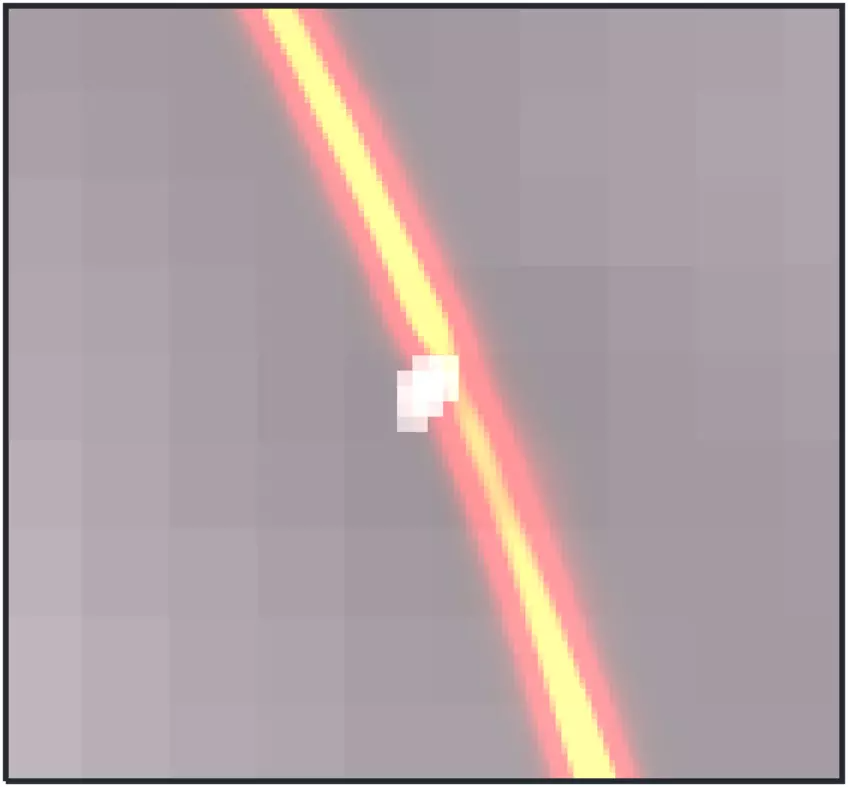Astronomers have broken two records in one thanks to an incredible serendipitous alignment of cosmic objects. It’s the highest resolution detection of a gravitationally lensed radio arc, and within it, a small kink indicating the presence of a small gravitational mass – the smallest ever seen, creating this effect at cosmic distances.
The rest of this article is behind a paywall. Please sign in or subscribe to access the full content.
Dense objects can warp spacetime, making it act like a lens. A dense foreground object, such as a star, a black hole, but also a galaxy or a galaxy cluster, can magnify the light of a distant background galaxy.
This is the case of JVAS B1938+666, an elliptical galaxy located 6.5 billion light-years from us, magnifying the light of an object that is over 11 billion light-years away, located right behind it in our line of sight.
The alignment of this system is very good. In infrared, it is possible to see an almost perfect Einstein ring; in radio waves, a thin arc is visible. The source of the radio waves is believed to be a young supermassive black hole undergoing a period of increased growth, creating a certain asymmetry in the emission that is then magnified by the gravitational lens.
The observations of the radio arc are at the highest resolution ever achieved for such an object and were possible thanks to the Very Long Baseline Interferometry technique, where radio telescopes can be connected in such a way that their effective size is equivalent to their distance. So two telescopes across a continent become the size of that continent.

The zoomed view shows the pinch in the luminous radio arc caused by the extra mass from the dark object. No visible, infrared or radio light has been seen from the dark object.
Image credit: Keck/EVN/GBT/VLBA
Twenty-two telescopes were connected in this way, revealing incredible details in the lensed arc, including the presence of a small dark object. This is estimated to be around 1 million times the mass of the Sun and could help answer the question of whether dark matter is smooth or can clump up.
“From the first high-resolution image, we immediately observed a narrowing in the gravitational arc, which is the tell-tale sign that we were onto something. Only another small clump of mass between us and the distant radio galaxy could cause this,” John McKean from the University of Groningen, the University of Pretoria, and the South African Radio Astronomy Observatory said in a statement.
Creating such an image is not a simple matter of getting the data together – complex analysis to match it is necessary, and intricate models needed to be used to extract details, such as the kink that indicates the presence of a dense object not seen in visible light.
“The data are so large and complex that we had to develop new numerical approaches to model them. This was not straightforward as it had never been done before,” said Simona Vegetti at the Max Planck Institute for Astrophysics.
“Given the sensitivity of our data, we were expecting to find at least one dark object, so our discovery is consistent with the so-called ‘cold dark matter theory’ on which much of our understanding of how galaxies form is based,” added Devon Powell at the Max Planck Institute for Astrophysics. “Having found one, the question now is whether we can find more and whether their number will still agree with the models.”
The work is published in two papers, one focusing on the radio arc and one on the dark object, published respectively in the Monthly Notices of The Royal Astronomical Society and Nature Astronomy.
Source Link: "We Were Onto Something": Highest Resolution Radio Arc Shows The Lowest Mass Dark Object Yet